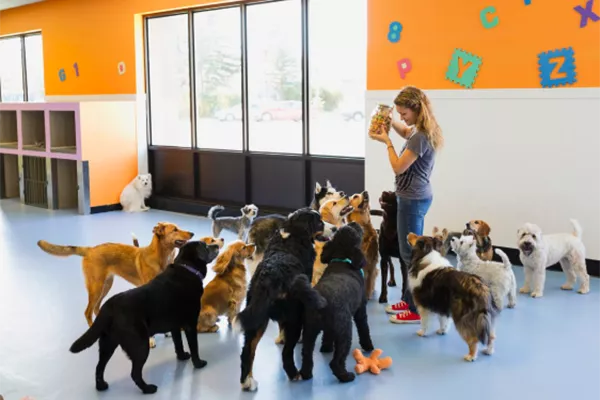Understanding the Role of Supervision:
Supervision at a dog daycare facility encompasses more than just keeping an eye on the dogs. It involves actively monitoring their behavior, interactions, and overall well-being to ensure a positive and safe environment for all participants. Supervisors are trained to recognize signs of stress, aggression, or discomfort in dogs and intervene as needed to prevent conflicts or injuries. Additionally, supervisors oversee group dynamics, facilitate positive interactions between dogs, and enforce rules and guidelines to maintain order and safety.
The Impact of Supervision on Safety:
Proper supervision is crucial for maintaining a safe environment at dog daycare facilities. Dogs are social creatures with complex behaviors and personalities, and their interactions can sometimes lead to conflicts or misunderstandings. Without adequate supervision, these conflicts can escalate into fights or other dangerous situations. Supervisors play a vital role in diffusing tension, redirecting negative behaviors, and preventing incidents before they occur. Their presence helps ensure that dogs can play and interact in a controlled and supervised manner, minimizing the risk of injuries or accidents.
Ensuring Safety at Dog Daycare:
Supervision is essential at all times during operating hours at a dog daycare facility. This includes monitoring dogs during playtime, mealtime, rest periods, and any other activities throughout the day. Supervisors should be present in play areas, both indoors and outdoors, to closely observe dogs and intervene if necessary. Additionally, supervisors should be trained in canine behavior and first aid, enabling them to respond quickly and effectively to any emergencies or medical issues that may arise.
The Role of Staff-to-Dog Ratio:
Maintaining an appropriate staff-to-dog ratio is essential for effective supervision at dog daycare facilities. The exact ratio may vary depending on factors such as the size of the facility, the number of dogs in attendance, and the layout of the play areas. However, as a general guideline, there should be enough staff members present to adequately monitor and manage the dogs in their care. A higher staff-to-dog ratio allows for more individualized attention and supervision, reducing the likelihood of accidents or incidents.
Training and Qualifications of Supervisors:
Effective supervision requires knowledgeable and experienced staff members who understand canine behavior and are trained in proper supervision techniques. Supervisors should receive comprehensive training in dog behavior, body language, and communication, enabling them to recognize signs of stress, anxiety, or aggression in dogs. Additionally, supervisors should be skilled in managing group dynamics, resolving conflicts, and enforcing rules and boundaries to maintain a safe and orderly environment.
Proactive Measures for Safety:
In addition to reactive supervision, dog daycare facilities should implement proactive measures to enhance safety and prevent incidents. This may include separating dogs into smaller playgroups based on size, age, temperament, and play style to minimize the risk of conflicts. Providing ample space for dogs to move freely and engage in various activities can also help prevent overcrowding and reduce stress levels. Additionally, regular facility inspections, safety checks, and maintenance procedures ensure that the environment remains clean, secure, and hazard-free for dogs and staff alike.
Open Communication with Pet Owners:
Effective supervision extends beyond the walls of the daycare facility to include open communication with pet owners. Daycare staff should keep pet owners informed about their dog's behavior, interactions, and any notable incidents that occur during their stay. This allows pet owners to stay informed about their dog's well-being and address any concerns or issues promptly. Additionally, pet owners should feel comfortable communicating their dog's preferences, needs, and any relevant medical or behavioral information to daycare staff to ensure a positive experience for their pets.
Continuous Monitoring and Evaluation:
Supervision at dog daycare facilities is an ongoing process that requires continuous monitoring and evaluation. Staff members should regularly assess the behavior and interactions of the dogs in their care, adjusting as needed to ensure a safe and enjoyable environment for all participants. This may involve implementing new protocols, modifying playgroups, or providing additional training for staff members as necessary. By continually striving to improve supervision practices, dog daycare facilities can maintain high standards of safety and quality of care for their canine clients.
Final Thoughts:
Supervision plays a crucial role in ensuring safety at dog daycare facilities. Proper supervision involves actively monitoring dogs' behavior, interactions, and well-being to prevent accidents, conflicts, and other potentially harmful situations. By maintaining an appropriate staff-to-dog ratio, providing comprehensive training for supervisors, implementing proactive safety measures, communicating openly with pet owners, and continuously monitoring and evaluating supervision practices, dog daycare facilities can create a safe and enjoyable environment where dogs can socialize, exercise, and thrive.








